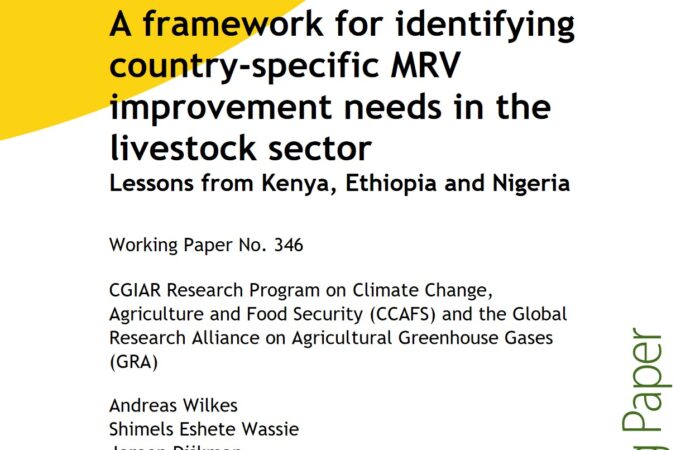
The working paper presents a framework for assessing country-specific needs, opportunities and priorities for improving measurement, reporting and verification (MRV) of livestock greenhouse gas (GHG) emissions and emission reductions. The framework consists of 13 guiding questions that are implemented in an eight-step assessment. The steps are:
Phase 1: Clarify the context
Step 1: Assess current and future expected trends in the livestock sector and their GHG emissions implications.
Step 2: Identify policies and measures that are expected to impact GHG emissions.
Step 3: Assess how livestock sector trends, policies and measures may affect GHG emissions
Phase 2: Assess current MRV arrangements and stakeholders’ demands for MRV improvement
Step 4: Build an overview of current MRV arrangements and performance.
Step 5: Identify stakeholders’ specific needs for information from MRV systems and gaps between current MRV performance and stakeholders’ information needs.
Step 6: Identify specific constraints affecting MRV performance.
Phase 3: Identify options, priorities and a roadmap for MRV improvement
Step 7: Identify options for MRV improvement.
Step 8: Involve stakeholders in developing a roadmap for MRV improvement.
This working paper explains the steps and guiding questions in each phase of the assessment and provides illustrative examples based on supporting MRV improvement processes in Kenya and Ethiopia as part of the CCAFS’ Enhancing capacities for MRV of sustainable livestock actions in East Africa’ project. The results of a scoping exercise for livestock MRV improvements in Nigeria were conducted as part of GRA’s support to the Climate and Clean Air Coalition’s work on short-lived climate pollutants in Nigeria.








